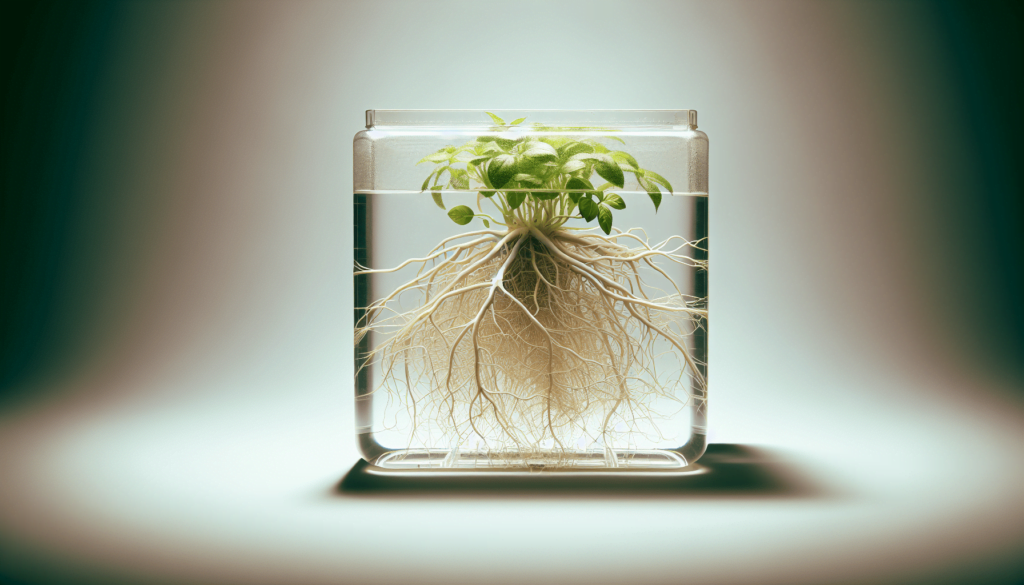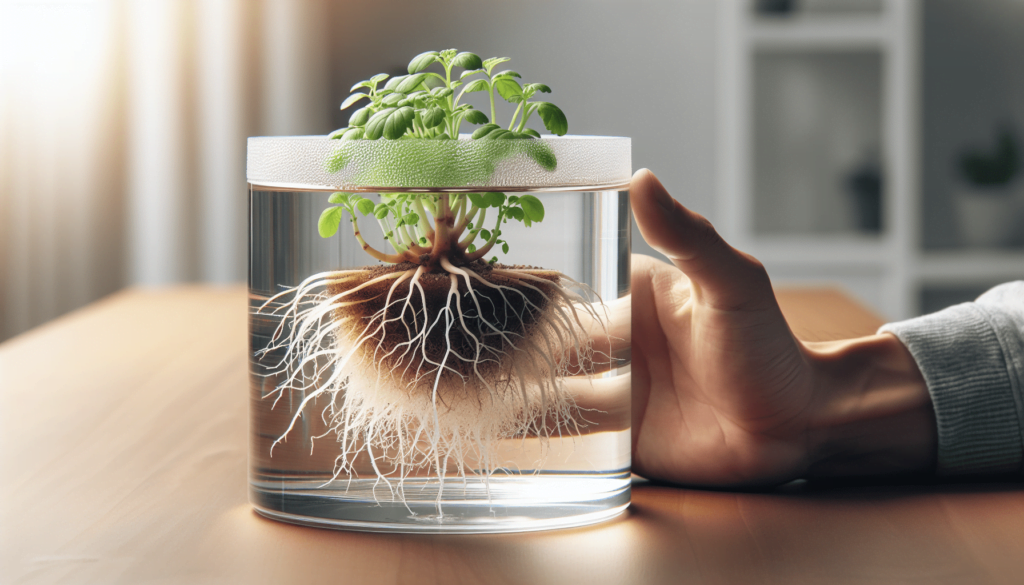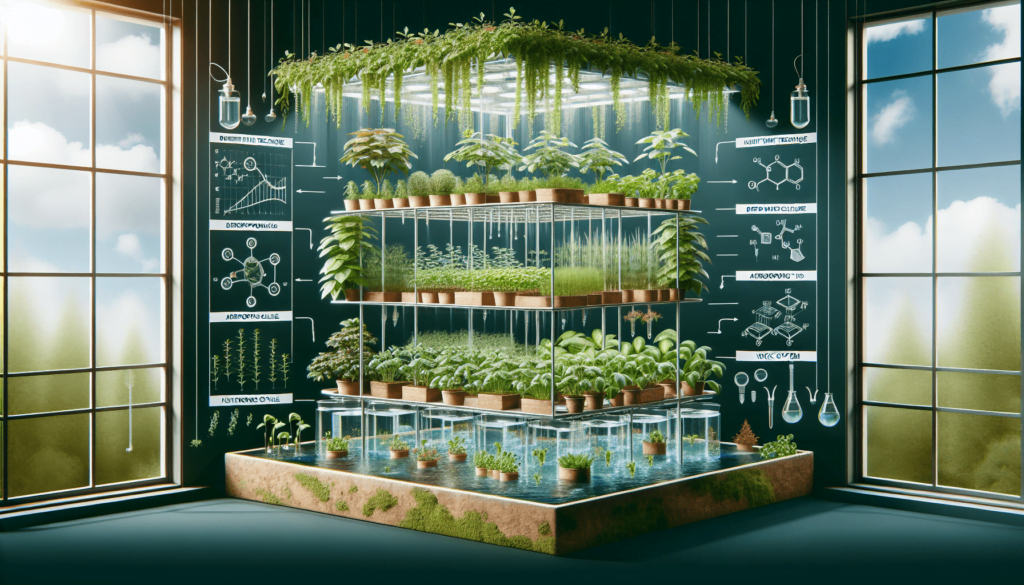What is the Kratky Method?
Before we get into the nitty-gritty of timing, let’s quickly review what the Kratky Method is. Named after Dr. B.A. Kratky, this method is a passive hydroponic technique that requires no electricity, pumps, or fancy gadgets. Essentially, plants are suspended above a nutrient solution with their roots partially submerged. As they grow, they consume the solution, and the water level drops, creating an air gap that allows roots to get oxygen. It’s a simple, low-maintenance method perfect for power outages.
iHarvest | What to Do if Your Power Goes Out
Don't panic! Angie explains how to keep your plants growing when the lights go out.
Immediate Effects of Power Outage
Day 1: Adapting to the Change
When the power first goes out, your hydroponic system, which relies on pumps and air stones, comes to a sudden halt. For the first 24 hours, your plants won’t notice much difference. They’ll continue to thrive off the residual oxygen and nutrients in the water.
- Pros:
- No immediate panic required.
- Plants have some time to adapt.
- Cons:
- Pumps and aeration systems stop working.
- Slight drop in dissolved oxygen levels.
Days 2-3: Roots Searching for Air
After the first day, things start to change. Without the constant flow of oxygenated water, the roots begin to feel the lack of oxygen. If you transition to the Kratky Method quickly, your plants will start adapting by developing more air roots.
- Pros:
- Kratky Method starts to take effect.
- Plants begin forming air roots for oxygen.
- Cons:
- Slight stress on the plants.
- Water level needs to be monitored.

Days 4-7: Critical Transition Period
By day four, the real test begins. The roots have had a few days to adapt, but the nutrient solution level is crucial now. Ensure the water level drops gradually to create that essential air gap. Plants should still be healthy, but keep an eye out for any signs of stress.
- Pros:
- Plants continue to adapt.
- Nutrient uptake still effective.
- Cons:
- Risk of root rot if water level isn’t monitored.
- Potential nutrient imbalances.
Days 7+: Long-Term Effects
If your power outage lasts longer than a week, you’ll be fully reliant on the Kratky Method. By now, your plants should have developed sufficient air roots to sustain themselves. However, long-term use of this method requires careful monitoring of nutrient levels and water quality to avoid deficiencies and imbalances.
- Pros:
- Plants are better adapted.
- Low maintenance once stabilized.
- Cons:
- Continuous monitoring needed.
- Potential for slower growth compared to active hydroponics.
Preventing Problems
Monitor Water Levels
One of the most critical aspects of the Kratky Method is maintaining the right water level. Ensure the water level drops gradually to provide both nutrients and oxygen to the roots.
Check Nutrient Solutions
Without the constant circulation of nutrients, there’s a risk of imbalances. Regularly check and adjust your nutrient solution to keep your plants healthy.
Watch for Signs of Stress
Keep an eye on your plants for any signs of stress, such as yellowing leaves or stunted growth. Early detection can help you address issues before they become serious problems.
Backup Power Solutions
Consider investing in backup power solutions like a generator or battery backup system. This can provide temporary power to your hydroponic setup during outages, giving you time to transition to the Kratky Method without any hiccups.
%27%20fill-opacity%3D%27.5%27%3E%3Cellipse%20fill%3D%22%23252525%22%20fill-opacity%3D%22.5%22%20rx%3D%221%22%20ry%3D%221%22%20transform%3D%22rotate(-63.6%20787.2%20-616.7)%20scale(484.75714%20269.57765)%22%2F%3E%3Cellipse%20fill%3D%22%23fafafa%22%20fill-opacity%3D%22.5%22%20rx%3D%221%22%20ry%3D%221%22%20transform%3D%22matrix(87.30808%20-941.52697%20128.94753%2011.95734%20123.3%2062.8)%22%2F%3E%3Cellipse%20fill%3D%22%23a6a6a6%22%20fill-opacity%3D%22.5%22%20rx%3D%221%22%20ry%3D%221%22%20transform%3D%22matrix(-141.04697%20-515.27787%20168.08004%20-46.00853%20382.2%20494.4)%22%2F%3E%3Cellipse%20fill%3D%22%23767676%22%20fill-opacity%3D%22.5%22%20rx%3D%221%22%20ry%3D%221%22%20transform%3D%22matrix(-49.395%20-107.39243%20441.93248%20-203.26623%20800.7%20164.9)%22%2F%3E%3C%2Fg%3E%3C%2Fsvg%3E)
Final Thoughts
Switching to the Kratky Method during a power outage is a viable solution, but it requires careful monitoring and adjustment. Your plants can survive and even thrive if you manage the transition well. So next time the lights go out, you’ll be prepared to keep your hydroponic garden growing strong!
Got any power outage stories or tips for fellow hydroponic enthusiasts? Share them in the comments below. And remember, a little preparation goes a long way in keeping your garden green and vibrant, no matter what challenges come your way.





